Hydrogel fibers make tissue generation efficient
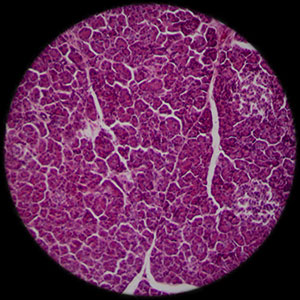 Cell-filled hydrogel fibers could provide the basis for engineered tissues to effectively repair damaged organs.
Cell-filled hydrogel fibers could provide the basis for engineered tissues to effectively repair damaged organs.
Dec 18th, 2013
Read more
 Subscribe to our Biotechnology News feed
Subscribe to our Biotechnology News feed
 Cell-filled hydrogel fibers could provide the basis for engineered tissues to effectively repair damaged organs.
Cell-filled hydrogel fibers could provide the basis for engineered tissues to effectively repair damaged organs.
Dec 18th, 2013
Read more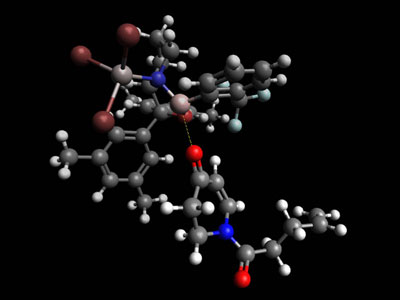 Photoreactions are driven by light energy and are vital to the synthesis of many natural substances. Since many of these substances are also useful as active medical agents, chemists try to produce them synthetically. But in most cases only one of the possible products has the right spatial structure to make it effective. Researchers have now developed a methodology for one of these photoreactions that allows them to produce only the specific molecular variant desired.
Photoreactions are driven by light energy and are vital to the synthesis of many natural substances. Since many of these substances are also useful as active medical agents, chemists try to produce them synthetically. But in most cases only one of the possible products has the right spatial structure to make it effective. Researchers have now developed a methodology for one of these photoreactions that allows them to produce only the specific molecular variant desired.
Dec 17th, 2013
Read more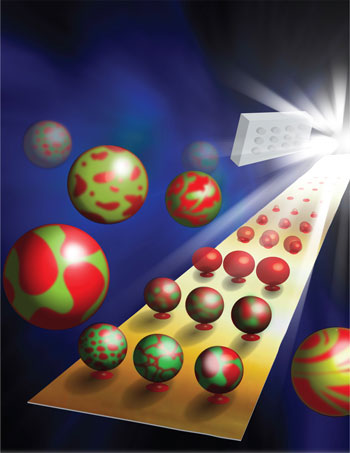 Easily manufactured, low-cost artificial cells manufactured using microprinting may one day serve as drug and gene delivery devices and in biomaterials, biotechnology and biosensing applications, according to a team of Penn State biomedical engineers. These artificial cells will also allow researchers to explore actions that take place at the cell membrane.
Easily manufactured, low-cost artificial cells manufactured using microprinting may one day serve as drug and gene delivery devices and in biomaterials, biotechnology and biosensing applications, according to a team of Penn State biomedical engineers. These artificial cells will also allow researchers to explore actions that take place at the cell membrane.
Dec 16th, 2013
Read moreResearchers at the Polytechnic Institute of New York University and the NYU College of Dentistry have developed a carrier in their lab that is five times more efficient in delivering DNA into cells than today's commercial delivery methods - reagent vectors. This novel complex is a peptide-polymer hybrid, assembled from two separate, less effective vectors that are used to carry DNA into cells. The study helps researchers better understand gene function.
Dec 16th, 2013
Read more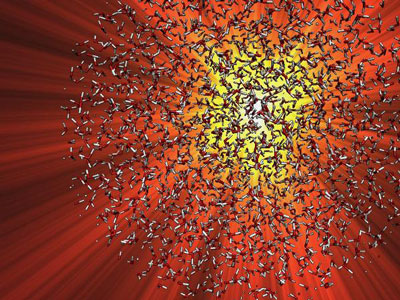 Novel method opens new paths for experiments with heated samples of biological relevance.
Novel method opens new paths for experiments with heated samples of biological relevance.
Dec 16th, 2013
Read more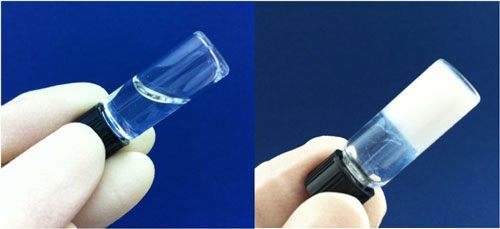 Researchers develop temperature-sensitive gelling scaffolds to regenerate craniofacial bone.
Researchers develop temperature-sensitive gelling scaffolds to regenerate craniofacial bone.
Dec 14th, 2013
Read more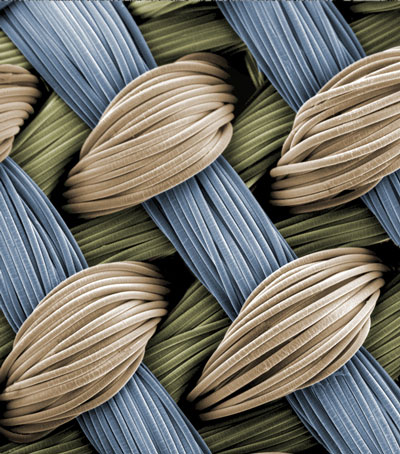 A Duke research team has developed a better recipe for synthetic replacement cartilage in joints, calling for a newly designed durable hydrogel to be poured over a three-dimensional fabric scaffold.
A Duke research team has developed a better recipe for synthetic replacement cartilage in joints, calling for a newly designed durable hydrogel to be poured over a three-dimensional fabric scaffold.
Dec 13th, 2013
Read moreBreakthrough study by the National University of Singapore sheds light on skin cell migration in wound healing process.
Dec 13th, 2013
Read more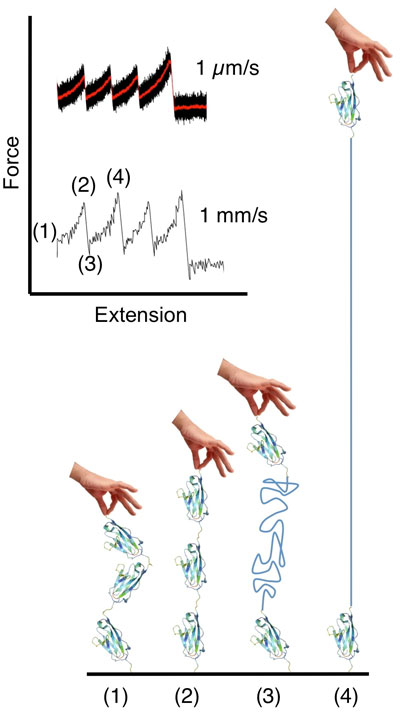 The first experiment that allows manipulating a single molecule at computer simulation speed has been carried out in a study.
The first experiment that allows manipulating a single molecule at computer simulation speed has been carried out in a study.
Dec 13th, 2013
Read more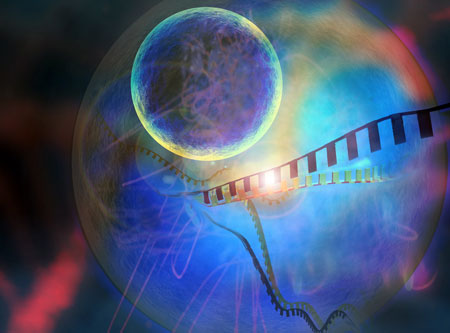 Researchers managed to overcome remaining key limitations of RNA interference (RNAi) - a unique method to specifically shut off genes. By using an optimized design, the scientists were able to inhibit genes with greatly enhanced efficiency and accuracy.
Researchers managed to overcome remaining key limitations of RNA interference (RNAi) - a unique method to specifically shut off genes. By using an optimized design, the scientists were able to inhibit genes with greatly enhanced efficiency and accuracy.
Dec 13th, 2013
Read moreNew gene-editing system enables large-scale studies of gene function.
Dec 13th, 2013
Read more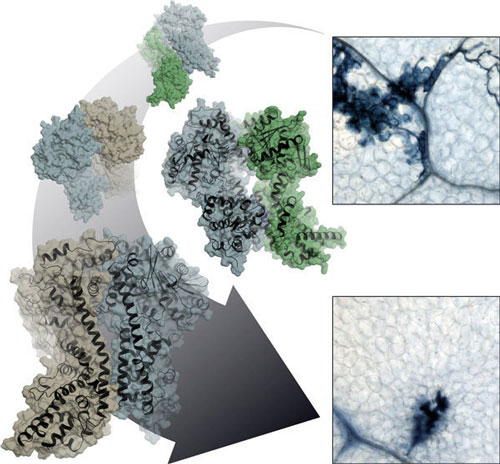 The molecular architecture of three key proteins and their complexes reveals how plants fine-tune their immune response to pathogens.
The molecular architecture of three key proteins and their complexes reveals how plants fine-tune their immune response to pathogens.
Dec 11th, 2013
Read moreResearchers investigated a biomedical application following a coronary artery bypass surgery and found that the application allowed the human body to regenerate its own tissue.
Dec 11th, 2013
Read more As more reports appear of a grim 'post-antibiotic era' ushered in by the rise of drug-resistant bacteria, a new strategy for fighting infection is emerging that targets a patient's cells rather than those of the invading pathogens. The technique interferes with the way that the pathogens take over a patient's cells to cause infection.
As more reports appear of a grim 'post-antibiotic era' ushered in by the rise of drug-resistant bacteria, a new strategy for fighting infection is emerging that targets a patient's cells rather than those of the invading pathogens. The technique interferes with the way that the pathogens take over a patient's cells to cause infection.
Dec 11th, 2013
Read more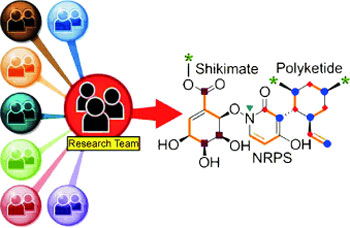 Since the discovery of penicillin, fungi have been a nearly inexhaustible source for the discovery of new drugs. 'Crowdsourcing', the cooperation of a large number of interested nonscientists, has helped to find a new fungus from which American researchers have now isolated and characterized an unusual metabolite with interesting antitumor activity.
Since the discovery of penicillin, fungi have been a nearly inexhaustible source for the discovery of new drugs. 'Crowdsourcing', the cooperation of a large number of interested nonscientists, has helped to find a new fungus from which American researchers have now isolated and characterized an unusual metabolite with interesting antitumor activity.
Dec 11th, 2013
Read more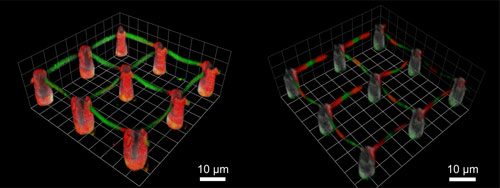 The Petri dish is a classical biological laboratory device, but it is no ideal living environment for many types of cells. Studies lose validity, as cell behavior on a flat plastic surface differs from that in branched lung tissue, for example. Researchers of Karlsruhe Institute of Technology have now presented a method to make three-dimensional structures attractive or repellent for certain types of cells.
The Petri dish is a classical biological laboratory device, but it is no ideal living environment for many types of cells. Studies lose validity, as cell behavior on a flat plastic surface differs from that in branched lung tissue, for example. Researchers of Karlsruhe Institute of Technology have now presented a method to make three-dimensional structures attractive or repellent for certain types of cells.
Dec 11th, 2013
Read more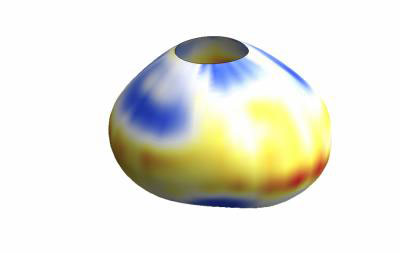 A new method for measuring the cellular forces that shape tissues and organs.
A new method for measuring the cellular forces that shape tissues and organs.
Dec 9th, 2013
Read moreInternational study demonstrates protein-measurement technique's potential to standardize quantification of the entire human proteome.
Dec 8th, 2013
Read more